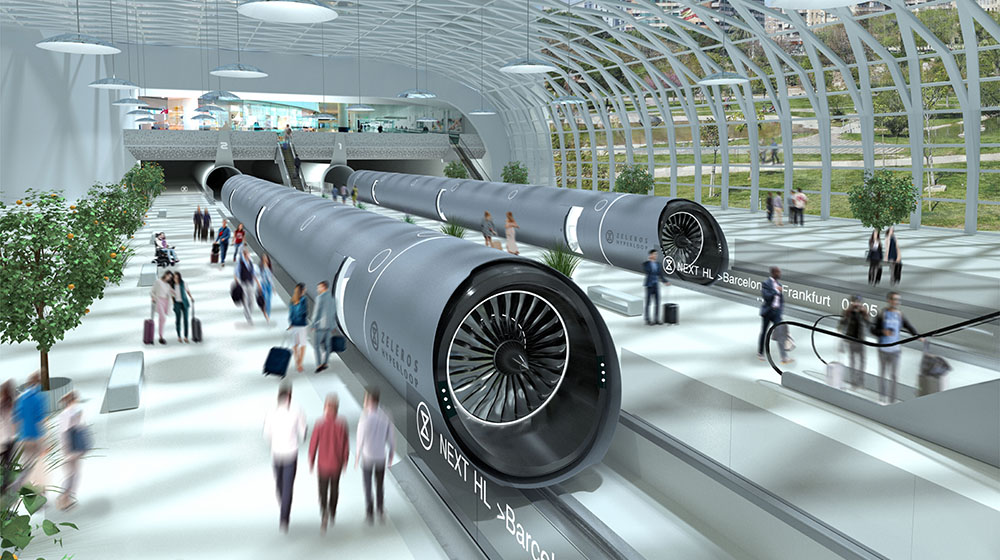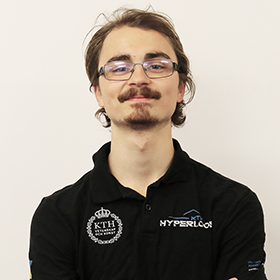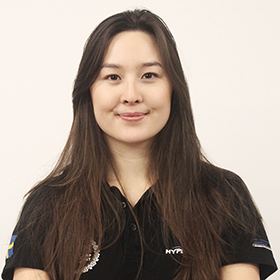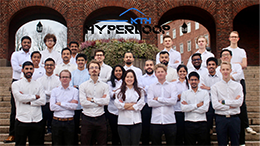A speedy dream for transportation

How about 25 minutes to get from Stockholm to Gothenburg? In a basement at KTH, the technology for Hyperloop is taking shape. Fasten your seat belts; here we are talking about the transports of the future!
Step into the small craft in central Stockholm, and a coffee later, you step out in the middle of Gothenburg. Fast as a plane, but smooth as a train. Hyperloop has been called the fifth mode of transportation. Small train carriages, or capsules, rush forward in a tube without friction. To get minimal air resistance, the pressure in the tube is low, about 1 percent of the atmospheric pressure, and the capsule can therefore reach speeds of 1200 km/h.

It is still a while before this ”pneumatic tube mail for humans” can become a reality. The technology is not ready to be implemented, but there is research and companies that are passionate about the transport method being developed in the coming years around the world. There is just such a gang in the basement under ITRL's premises at KTH in Stockholm. Here, Sweden's Hyperloop team, which consists of about 50 students from all over KTH, works - in their spare time - in addition to their full-time studies.
”We feel it’s important that this technology is developed and becomes a reality. The vision is an extensive "metro system" of Hyperloop in Sweden that can then be connected with other countries' systems,” says Claes Henriksson, one of the group's two team captains.
Many people associate the technology with the entrepreneur Elon Musk, who in 2013 started calling the transport technology Hyperloop. But the idea of pneumatic transportations for people is old. As early as 1799, the British inventor George Medhurst had a vision of transporting goods, and then people, through a tube of cast iron using air pressure.
When KTH's Hyperloop team started in 2018, it focused on Elon Musk's SpaceX competition, where student teams from all corners of the world could participate with solutions for the technology. KTH's team came in 50th place out of 1,200 competing teams and was invited to California. The SpaceX competitions are over, but the idea of a new transport system is alive. A couple of the biggest Hyperloop companies are built around former student teams, and they drive Hyperloop development in Europe today, explains Sofia Hansson, the second team captain.

”Now we meet the industry at the European Hyperloop week instead, which is more of a conference and where the actual competition is more low key,” Sofia says.
When KTH goes to the Netherlands in July, the team brings its solutions for the mechanical system, solutions to scale up the project, and possibly news for the propulsion system. But also a prototype of a simpler capsule.
”The capsule itself will not levitate but has a rotary motor,” says Claes. ”But in parallel, we are also developing a so-called linear induction motor, where electromagnetic induction drives the capsule forward.”
He says that the levitation systems, the technology that will make the capsules hover, is a big challenge. Levitation causes counterforces that slow down the speed, and the solutions required to reduce the forces sufficiently are advanced. This makes the infrastructure very expensive, which is often cited by Hyperloop critics. And there are several obstacles to overcome that aren’t related to technology.
”For example, you have to agree on a standard so we avoid a situation like when Europe expanded the railway, which led to that different countries today have different track widths and different frequencies in the electricity supply.”
Safety is also a challenge, for example, how to evacuate from the tunnels and convince people that it is safe to travel in capsules in tunnels without air.
”But we get people today to step into an airplane to travel a mile up in the air…”
And, we still don’t know if the technology will reach its full potential, but the important thing is that you investigate it, says Claes.
”IF it really works, the reward would be huge!”
Text: Anna Gullers

